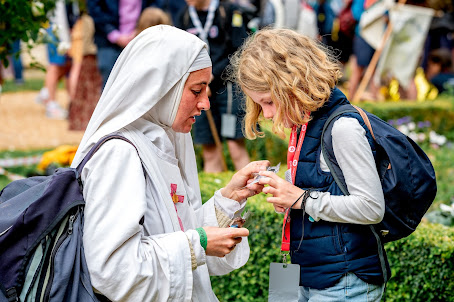The recent Apostolic Exhortation on the Liturgical Formation of the People of God [Desiderio Desideravi] obliges no one to do more than take note of it. The very genre of the text signals intentional non-bindingness: Pope Francis has not issued a motu proprio or written a doctrinal letter, but rather he wants to “simply provide some food for thought.” The tenor of the latter has again disgruntled many traditionalists, because the operating temperature toward countless loyal and peaceful faithful remains as frosty as in Traditionis Custodes. As unedifying as the harsh treatment from Rome is, it is essential to keep in mind the purely atmospheric meaning of the text.
Unburdened by quarrels
That there are different views of the Church within the Catholic Church and that the basic attitude of the faithful toward the Church can be discerned precisely from their liturgical behavior is not a new insight. Even before the Second Vatican Council this phenomenon could be observed. However, especially in the intensified debate following Paul VI’s liturgical reform, an attitude of forbearance toward attempts at liturgical renewal took hold in the Church, which sooner or later had to produce a greater serenity toward the traditional rite. After all, those who install rock-climbing parks in sacred spaces and use self-penned Eucharistic Prayers will hardly forbid young faithful to see in the Latin liturgy an exciting spiritual voyage of discovery.
The majority of visitors to the traditional Latin liturgy are inwardly unencumbered by the quarrels of the sixties and seventies over the rite and have experienced firsthand that ecclesiastical documents have no significant influence on liturgical events. At present, no bishop could introduce a liturgical break with current practice whose scope would come anywhere near the demands of the Apostolic Letter.
Numbers on the rise
Corona has not only caused the numbers attending the old Mass to rise in many places but has also remarkably expanded the circle of interested parties. Recently, worshipers from the charismatic milieu can be found in the traditional liturgy, looking for fellowship and song. They do not complain about deficiencies in the new rite, but they were affected by the suspension of Masses. For them, neither the rite nor lace rochette count. They are looking for an alternative to the dreariness of emaciated parishes, in which no real festive joy can arise even at correctly celebrated Eucharistic celebrations because the praise of God fades away between almost empty pews.
The old Mass has gained a remarkable momentum of its own at the local levels. In Germany, the traditionalists experienced this year what seemed unthinkable for decades: Bishop Bertram Meier of Augsburg himself ordained the candidates of the Priestly Fraternity of St. Peter, demonstratively backing the community. In France, too, the faithful vote with their feet: the traditional Pentecost pilgrimage of the young traditionalists from Paris to Chartres counted more participants than ever. The local bishop did not miss the opportunity to accompany the young pilgrims for one stage of the journey. In the meantime, a daughter movement has been established in Spain, which goes on pilgrimage from Oviedo to the Marian shrine of Covadonga.
The classical Roman rite is neither dead nor threatened in its existence; rather, only the axis is shifting. The vitality of the traditionalist movement is fed more than ever from the local churches; less from Rome. This development makes it a synodal factor par excellence.
Regina Einig
July 8, 2022
Die Tagespost
(source)
 |
| The vitality of the traditionalist movement... |
 |
| ...a synodal factor par excellence. |
 |
| (Three photos from the Chartres pilgrimage in June 2022) |

